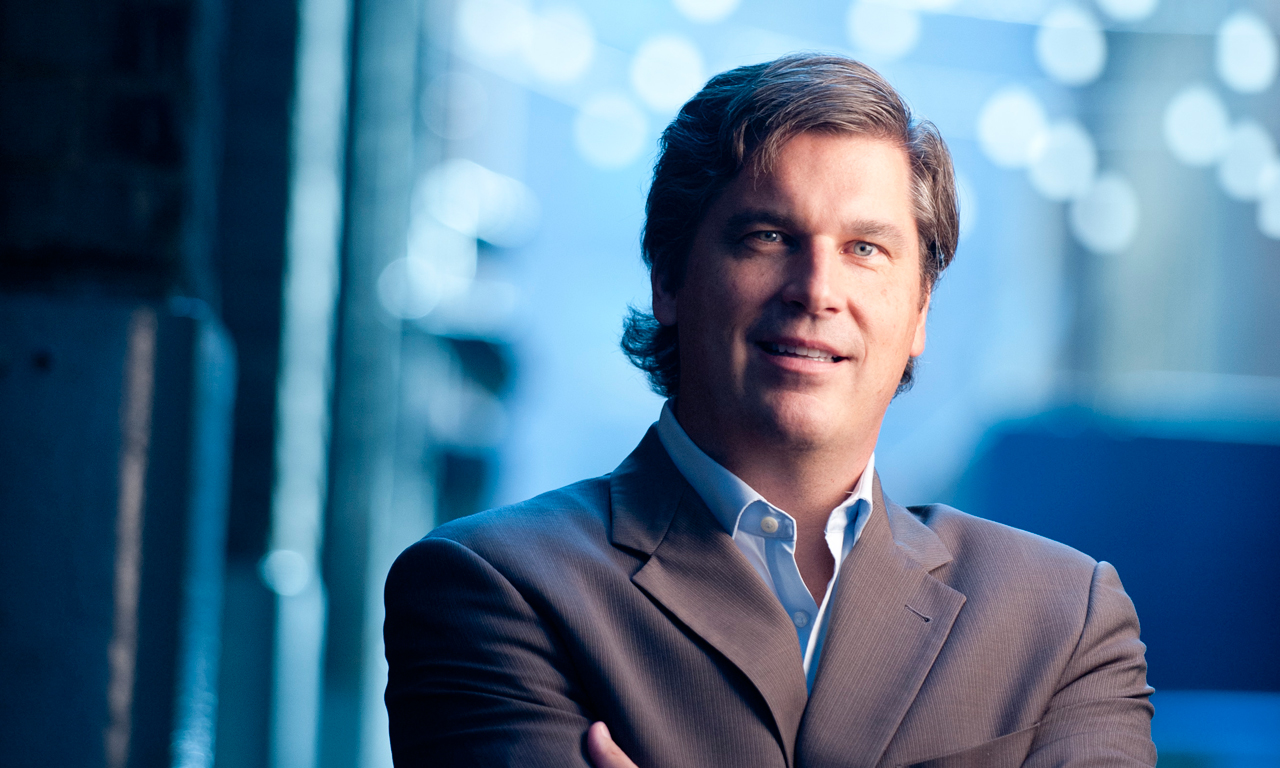Podcast: Play in new window | Download
Subscribe: iTunes | Android | RSS

Today’s interview is with Tom Goodmanson, President and CEO of Calabrio, a call centre software provider. We talk about contact centres, their importance, the lack of attention that they sometimes receive and some of the perennial problems that they struggle with including agent turnover.
This interview follows on from my recent interview – Aligning the organisation around three key journeys and why passenger experience equals employee experience – Interview with Mattijs ten Brink of Transavia – and is number 223 in the series of interviews with authors and business leaders that are doing great things, providing valuable insights, helping businesses innovate and delivering great service and experience to both their customers and their employees.
Highlights from my conversation with Tom:
- Tom just got married.
- Some contact centres have an annual agent turnover rate of 100%.
- However, Tom believes that a 0% turnover rate is achievable and should be a goal (Allowing for retirements and other elements).
- One the biggest reasons preventing companies from considering such a goal is inertia.
- Agent turnover should be a strategic measure for the level of quality that is being achieved in the contact centre.
- When Calabrio talks to its clients about achieving 0% agent turnover, their initial reaction is disbelief until they start having the discussion about the things that they can do to start reducing turnover.
- The conversation tends to be the start of a journey of conversations.
- But, it resonates with people that are spending $30k every time they lose an agent.
- The key to starting contact centre leaders on that journey towards 0% turnover is to start by understanding their workflow and how their people are working, where the bottle-necks are and how can they release or solve those bottle-necks through the use of additional tools like workforce management, quality management and analytics software.
- The solution is not just about scheduling but is also about how agents are treated inside their work environment.
- Flexible scheduling is something that works very well and has a big impact on the millennial and Z generations.
- The central assumption here is that almost everyone wants to go to work and do a good job and that organisations should focus on making their agents jobs easier and more flexible (where possible) so that everyone wins.
- Calabria’s software is built around MacGregor’s Theory Y, which assumes that managers have an “optimistic, positive opinion of their people, and they use a decentralized, participative management style”.
- One tactic which one of their customers in the US uses is to allow agents to ‘coupon’ their customers when they believe that the company has done wrong by them. That alone has reduced their agent turnover as it empowers agents to finish the service call in a way that they weren’t able to do so before.
- Tom cites a few examples to bring their approach to life:
- TNT (now part of Fedex) – typically agents tend to have to use between 7 and 9 different pieces of software. Calabrio helped them simplify their system and augmented it with agent initiated mentoring requests, dynamic scheduling and agent smart benchmarking. That allowed the agents to feel more empowered and help them to monitor and improve their own performance. This resulted in lower agent turnover and higher customer satisfaction.
- Amtrust Financial in New York City – their real problem was that agents had no real influence on their schedule or how they were doing and, because of their turnover, agents also faced a lack of training opportunities. Therefore, one of the things that they built into the product was a gamification element so that agents could see who was good at what skill and who they could get help and additional peer-lead training from. This was helped by a flexible and dynamic scheduling tool so that agents could easily schedule peer to peer mentoring opportunities. This improved agent turnover and drove improvements in productivity.
- Paychex – they were suffering from a clunky system and one where agents were frustrated as they didn’t have an easy view of their schedule. Like the Amtrust case, they introduced Calabrio’s suite including the flexible and dynamic scheduling tool so that agents could see and manage their schedule as well as schedule peer to peer mentoring opportunities. Again, this improved agent turnover and drove improvements in productivity.
- 37% of customers that work with an agent that they like are more likely to buy something from you in the future.
- The early improvement in agent turnover that clients achieve when they adopt Calabria’s way of working tends to be in the region of an initial 10% improvement in agent turnover. That can equate to hundreds of thousands if not millions of dollars worth of savings depending on agent turnover costs and the size of the contact centre operation.
- 80% of contact centre costs tend to be made up of employee costs.
- When 0% agent turnover isn’t the goal then perhaps you are not interested in hiring the best employees.
- Tom believes that organisations could achieve a 0% agent turnover rate within 2-3 years if they really committed to it and started in the right place i.e. understanding that there is a problem, understanding why there is a problem and getting everyone aligned around solving the problem.
- Measuring average handle time only stresses people and creates turnover.
- Customer experience isn’t your brand but is where your brand meets your brand promise. The problem is that for many organisations their brand promise is being broken in the contact centre every day.
- Wow service/experience for Tom is customised experience.
- Check out Calabrio’s events so you can out more about the company, particularly the Calabrio Customer Connect event in Las Vegas in October.
About Tom (taken from his Calabrio bio)
 Tom Goodmanson, President and CEO of Calabrio, has more than 20 years of experience leading fast growing dynamic software and technology companies. Since assuming the CEO position in 2009, Tom is credited with reinventing the company and its culture around a strategy to expand value and reach through new, innovative products, and remarkable customer experiences. Addressing the market need for simpler solutions to complex customer interaction challenges, Tom’s vision to redefine the standard for software ease-of-use has been instrumental in making Calabrio one of the fastest growing companies in the industry. Prior to his role at Calabrio, Tom was a senior leader in several successful technology-based companies, including Gelco Information Network and Magenic Technologies. Tom currently holds a board seat at Virteva. Tom has a B.S. degree in Accounting from St. Cloud State University.
Tom Goodmanson, President and CEO of Calabrio, has more than 20 years of experience leading fast growing dynamic software and technology companies. Since assuming the CEO position in 2009, Tom is credited with reinventing the company and its culture around a strategy to expand value and reach through new, innovative products, and remarkable customer experiences. Addressing the market need for simpler solutions to complex customer interaction challenges, Tom’s vision to redefine the standard for software ease-of-use has been instrumental in making Calabrio one of the fastest growing companies in the industry. Prior to his role at Calabrio, Tom was a senior leader in several successful technology-based companies, including Gelco Information Network and Magenic Technologies. Tom currently holds a board seat at Virteva. Tom has a B.S. degree in Accounting from St. Cloud State University.
Check out Calabrio, say Hi to them and Tom on Twitter @Calabrio and @tomgoodmanson and connect with Tom on LinkedIn here.



